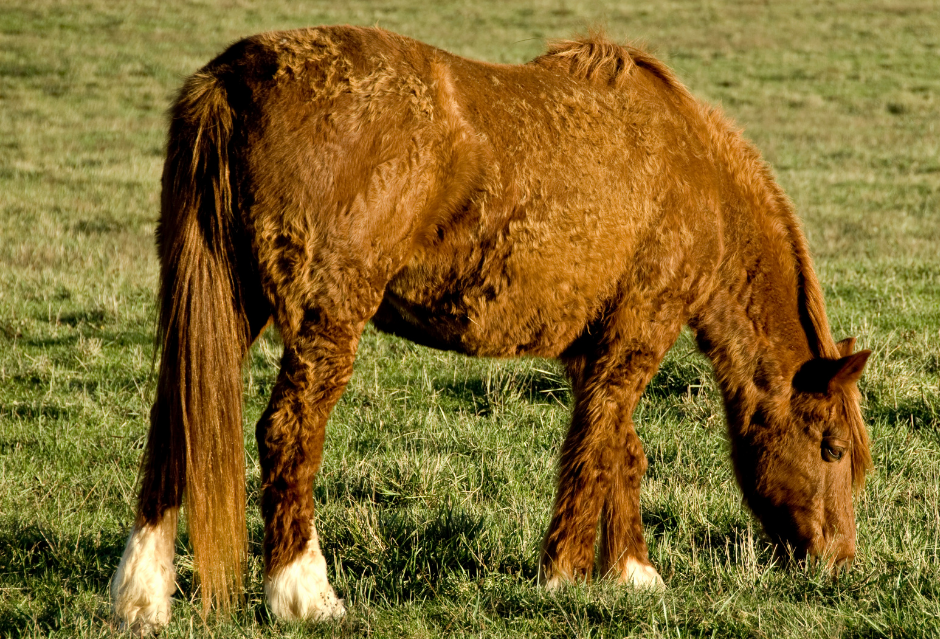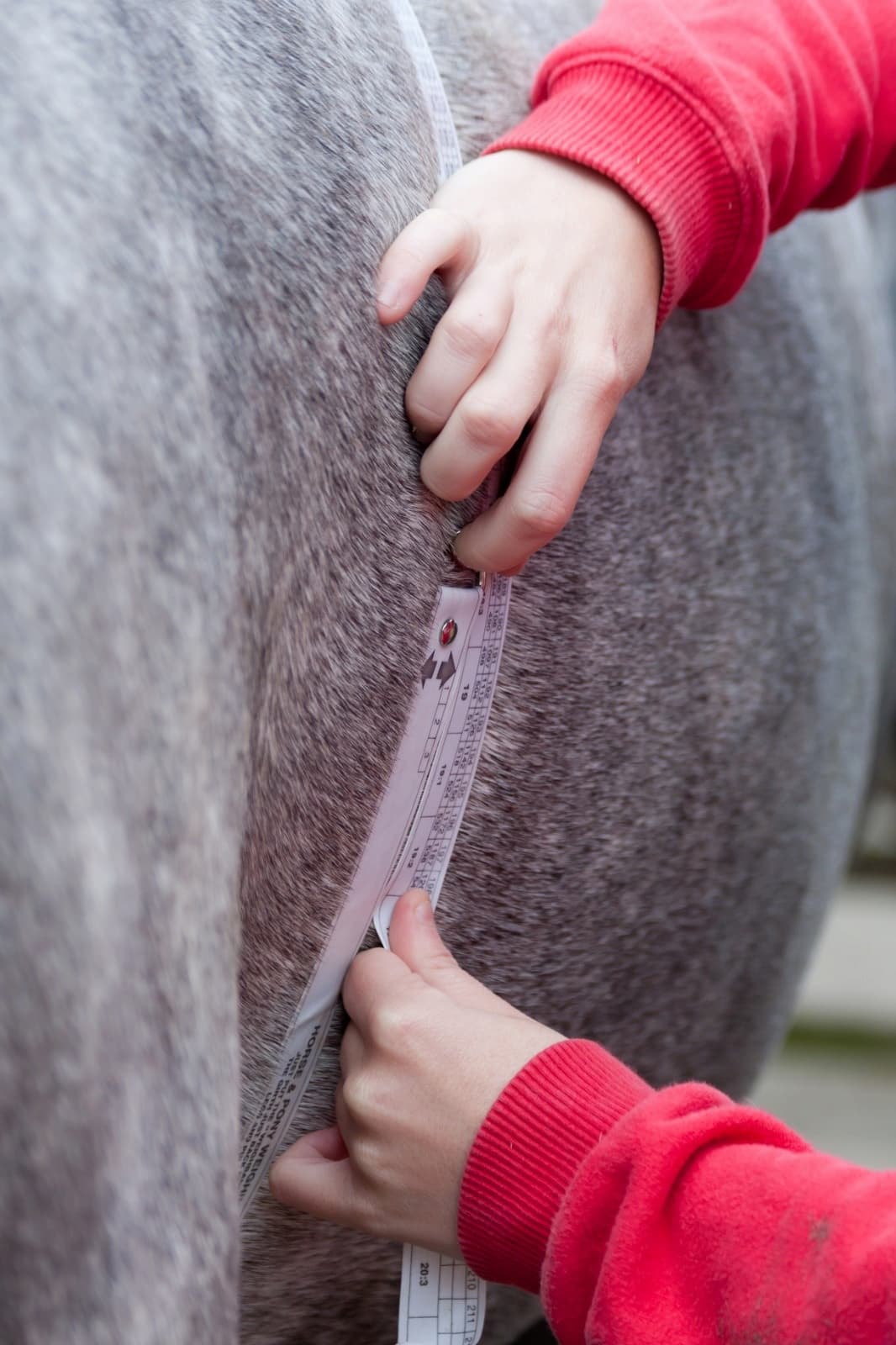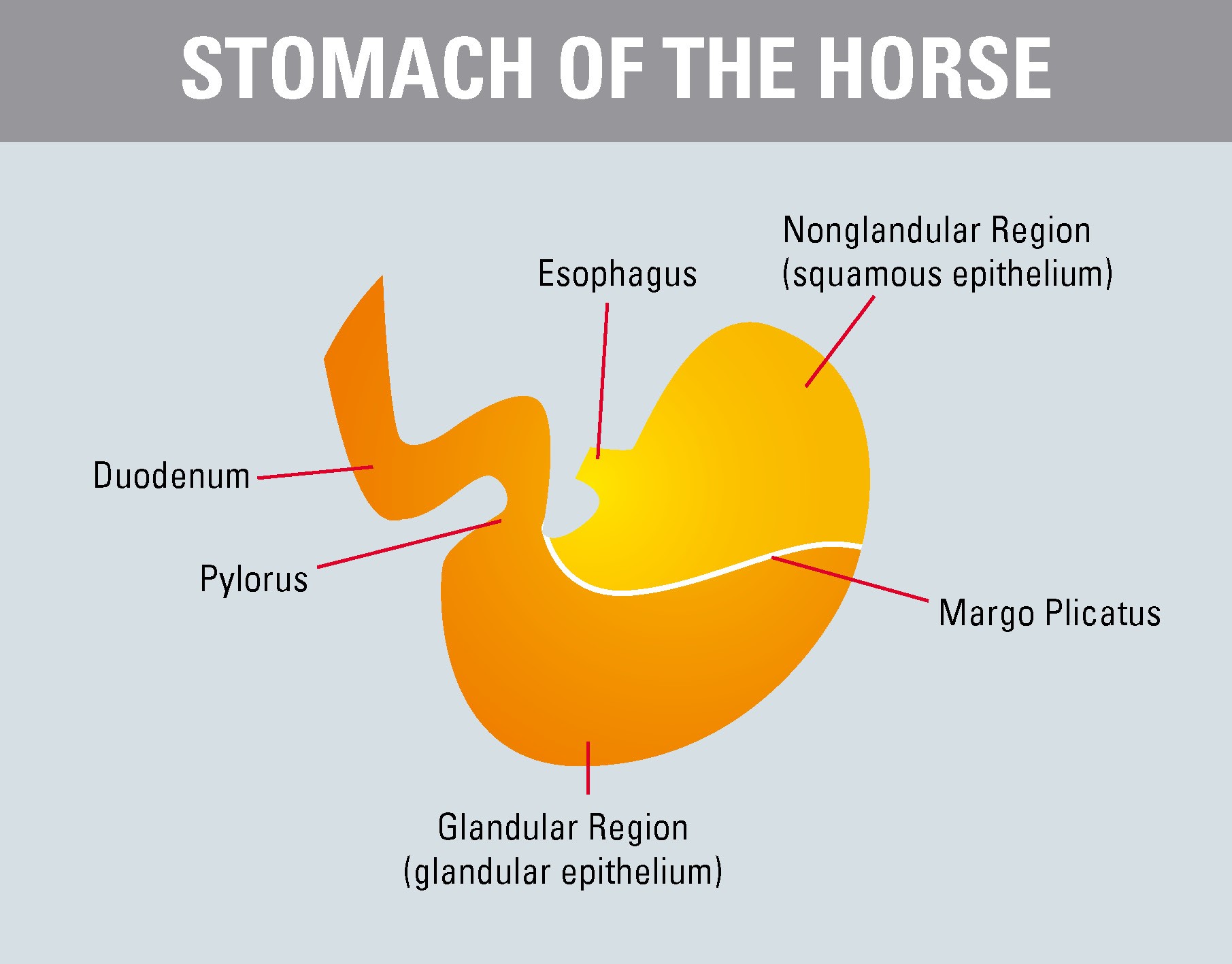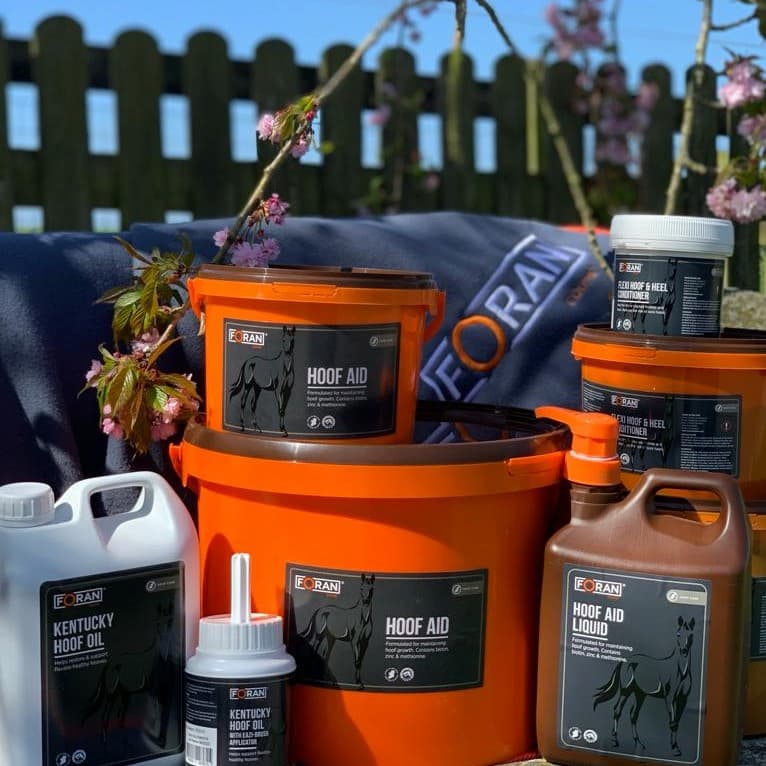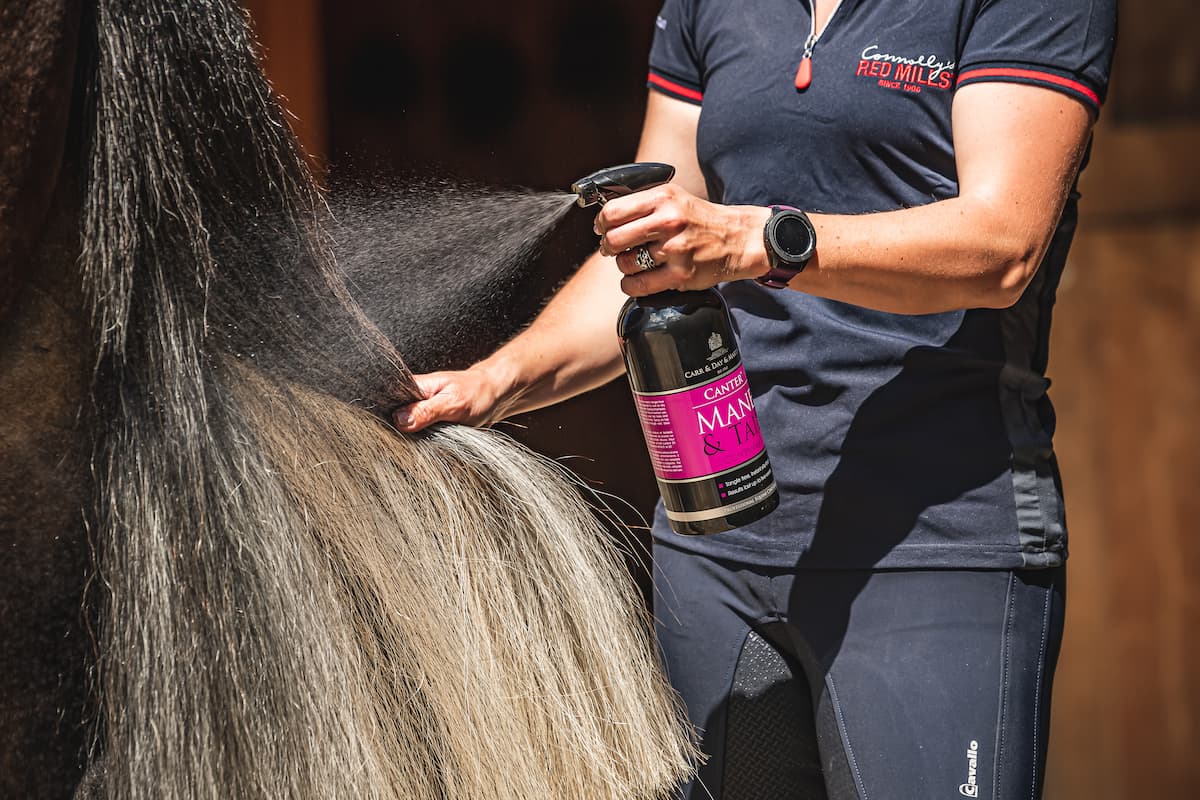Feb, 2017
Colic is a term used to describe abdominal pain and is the most common disorder occurring in the gastrointestinal tract.
The signs of colic vary enormously, some horses will become restless, stop eating and/ or paw the ground, whilst others may roll violently, sweat heavily and have elevated respiratory and heart rates. The degree to which a horse shows symptoms of colic is normally, but not always, related to the severity of the condition.
Colic is a broad term used to describe a range of more specific problems. There are many different types of colic horses can suffer from, including:
Impaction & Sand Colics
Impaction: this term describes when the bowel becomes blocked with food or other material. The blockage prevents the normal movement of fluid and food material through the gastrointestinal tract and causes the build-up of gas. The most common areas of the bowel affected are the ileocaecal junction (i.e. where the small and large intestine join) and the pelvic flexure (i.e. a hairpin bend in the large colon). Ileal impactions have been associated with a heavy parasite burden and in the USA the feeding of Bermuda hay has also been implicated. Pelvic flexure impactions are usually associated with an abrupt change in management (e.g. being stabled suddenly) and are common in horses that are on prolonged box-rest where bedding material (e.g. straw) is consumed in excess. Poor dental condition can also be the cause. Although impaction colic can occur at any time it is more common in winter, as horses usually drink less water as the environmental temperature cools (dehydration is a major contributing factor to impaction colic). This type of colic is often easily resolved with the administration of painkillers and/ or fluids but occasionally larger and more severe impactions may require surgery.
Sand: sand colic occurs due to the accumulation of sand in the large intestine resulting in a blockage. This type of colic is common in the UAE, where horses are turned out on sand or eat food on sand arenas. Prevention is better than cure, ensure feed and hay are not fed from the ground. Feed hay from a net or a manger and always ensure horses have plenty to eat, so they are not picking through the sand increasing the risk of ingestion. Always administer a ‘sand shifter’ type product for at least a week per month to move any ingested sand through the gastrointestinal tract. Mild cases can usually be treated medically but in more severe cases surgical intervention may be required.
Spasmodic & Gaseous Colics
Spasmodic: this is the most common type of colic and accounts for over 80% of all medical colics. Spasmodic colic occurs when the gut contracts abnormally, creating painful spasms. It can be intensely painful, but usually responds very well to anti-spasmodic medication (e.g. Buscopan), along with other therapeutic treatment. Spasmodic colic can be caused by a severe tapeworm burden, a stressful event, mild dehydration or be genuinely idiopathic (i.e. the cause is unknown).
Tympanic/ Gaseous: this type of colic occurs when gas builds up in the large intestine causing the gut wall to be stretched. It has been associated with a number of risk factors including increased time spent stabled, change in the diet (forage or hard feed), poor dental condition, crib-biting or windsucking behaviour. Generally gaseous colic can be treated medically but in some cases surgery may be needed.
Displacement & Torsion Colics
Torsions: torsion colics are one of the most severe types of colic and if not treated quickly can be fatal.
They are caused when the large colon twists around itself, cutting off the blood supply. A ‘twisted’ gut can occur suddenly and is often extremely painful. In most cases emergency surgery will be required. Broodmares, particularly after foaling are particularly at risk. However, mares can also colic post-foaling due to mild uterine contractions or other more serious complications such as post-partum haemorrhage, uterine inversion, rupture of the uterus or small colon.
Displacement: displacement colics occurs when a section of the large intestine (e.g. left or right dorsal) moves from its normal location and may become trapped or hooked over a ligament (e.g. the nephrosplenic ligament, which attaches the spleen to the left kidney). In the early stages, a horse with a displacement colic may only show mild signs but this can be deceptive. Some cases may resolve with administration of medication, withdrawal of food and gentle exercise, others will need surgery to correct the displacement. Larger horses are at greater risk from this condition.
Strangulation Colics
Pedunculated lipoma: lipomas are benign fatty tumours that develop on the mesentery, a thin sheet of connective tissue that attaches the intestines to the body wall. As the tumour grows, the connective tissue stretches into a stalk. This can wrap around the intestine, cutting off blood flow. Pedunculated lipoma are more common in elderly horses and can be life-threatening if not surgically removed.
Entrapment: these types of colic are most commonly caused when a part of the bowel threads itself through a small channel (i.e. the epiploic foramen, which connecting the two sacs of the abdominal cavity). For reasons that aren’t fully understood, it’s prevalent in horses that display oral stereotypies such as crib-biting or wind sucking and those that have a history of previous colic episodes. Entrapment colic can also occur if there is a tear in the mesentery through which a part of the bowel becomes stuck. Entrapment colics are very serious, as the blood supply is immediately cut off, and will require surgery. It is also worth bearing in mind that entrapment colic can happen secondary to displacement of the large intestine.
Intussusception: this occurs when the intestine ‘telescopes’ inside a portion of itself. It is most common in foals and yearlings. The cause is unknown but it tends to develop if the normal peristaltic movement is disrupted (e.g. diarrhoea or secondary to anterior enteritis). Although not proven, some veterinarians have also implicated gut damage caused by high ascarid or tapeworm burdens.
Enteritis & Colitis
Idiopathic focal eosinophilic enteritis: this is a relatively uncommon cause of colic. It occurs when inflammatory eosinophils, a type of white blood cell, cause one or more areas of the small intestine to thicken. As a result, the diameter is reduced and food or other ingested material creates a blockage. The reason why this occurs is not fully understood but it is thought that an immuno-hypersensitivity is likely. Changes in management, dietary factors and death of migrating parasites are also possible contributing factors. Although it can occur at any age idiopathic focal eosinophilic enteritis appear to be more common in young horses (0-5 years old). There is also evidence that this type of colic is more common between the months of July and November and that geographical location may also be a factor; a study in the UK suggests that horses in the North-West were at an increased risk. Surgery is frequently required to clear the blockage and in some cases part of the small intestine may need to be removed.
Anterior enteritis: this type of colic is also known as proximal enteritis, duodenitis-proximal jejunitis or proximal duodenitis- jejunitis and is an inflammatory condition affecting the small intestine. The affected section of gut loses its motility and therefore food and liquid builds up. The cause is not completely understood, however recent research has suggested that Clostridium perfingens bacteria may play a role. If anterior enteritis is suspected your vet may treat it medically, although surgery, which would allow for a definite diagnosis, may be required.
Colitis: colitis refers to inflammation of the colon and clinical signs include diarrhea and colic. It is an extremely serious condition and if left untreated can be fatal. However with early diagnosis and the correct treatment many horses can go on to make a full recovery. The term ‘colitis’ only describes a set of symptoms and it can be caused by many different agents (e.g. a virus, pathogenic bacteria, parasites, antibiotic treatment). Diagnosing the underlying cause is essential for formulating an appropriate treatment plan. Colitis can affect adult horses of all ages but it is more common between the ages of 2 and 10 years old.
It’s important to remember that colic is actually a symptom, not a disease in itself. Horses can have colic for countless reasons including parasitic burden, poor dental condition, changes to their management/ diet or because they have recently given birth. Although rare, swimming-induced colic can also occur and one study in racehorses concluded that 1 out of every 1,200 swims resulted in a swimming-induced colic, the cause of which remains unknown. Foals can also colic due to ulcers and occasionally a ruptured bladder. In foals the clinical signs of colic are often very different to those of colic in the adult horses (e.g. they may lie on their back and/or grind their teeth).
Most cases of colic can be successfully treated medically, but others are extremely serious and will require surgery. If you suspect your horse has colic you should contact your vet immediately – even mild signs can turn into something more serious exceptionally quickly and getting your vet to give your horse the once over could be the difference between life and death
Whilst you are waiting for your vet to arrive make sure your horse is in a safe area where they cannot injury themselves, or you. If your horse is stabled remove any feed but, provided they are calm, you can leave some water with them although they are unlikely to drink. If your horse is able to slowly walking them around for a 10-15 minutes can sometimes help. Finally, make sure your vet knows how to get to you, ensure that you have a way of transporting your horse in case they need hospital treatment, and check any insurance documents so that you can make informed decisions about your horse’s treatment.
For more information about feeding to avoid colic read Part 2 – Minimizing the Risk or get in touch with our expert team.
Contact our sales team via WhatsApp or email

Nicolas Gaumerais
Group Commercial Manager GCC Region
Based in the UAE, Nicolas Gaumerais is the Commercial Manager of Connolly's RED MILLS Group which includes Connolly's RED MILLS horse feeds and Foran Equine supplements sold in the GCC region. Nicholas regularly travels across the Gulf to meet customers.

Dominic Bligh
Group Commercial and Technical Executive GCC Region
Alternatively, reach out to Dominic Bligh who offers nutritional & technical support for Connolly's REDMILLS Feed and Foran Equine supplements. Dominic is also the Commercial Manager for Foran Equine Supplements. He regularly visits client's stables in the Middle East to advise on bespoke feeding programmes.

